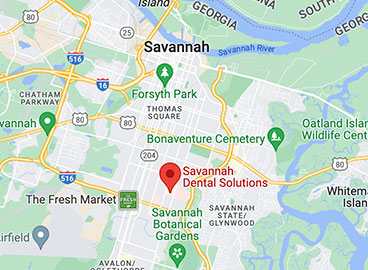Flossing is one of the most important steps in maintaining optimal oral health. While brushing removes plaque and food debris from the surface of your teeth, flossing reaches the areas your toothbrush cannot—between the teeth and beneath the gumline. If you’re not flossing regularly, you’re missing out on a key component of dental care that helps prevent cavities, gum disease, and bad breath.
Why Flossing Is Essential
Flossing helps remove plaque buildup and food particles that get trapped between teeth. If left unchecked, plaque can harden into tartar, leading to gum disease and tooth decay. Even the best toothbrush cannot effectively clean between teeth, making flossing a crucial daily habit.
Not convinced? Studies show that people who floss daily have healthier gums and a lower risk of cavities. If you’re struggling with bleeding gums when you floss, don’t give up—this could be a sign of early-stage gum disease, and regular flossing can help reverse the problem. If bleeding persists, schedule a dental exam to assess your gum health.
How to Floss Properly
Many people rush through flossing or use improper techniques, reducing its effectiveness. Follow these steps to ensure you’re flossing correctly:
1. Choose the Right Floss
There are different types of dental floss available, including:
- Waxed Floss – Slides easily between teeth and is less likely to fray.
- Unwaxed Floss – Thinner and can fit into tight spaces.
- Dental Tape – A broader, flat floss for people with wider gaps between teeth.
- Floss Picks – Convenient for on-the-go use but less effective than traditional floss.
- Water Flossers – A great alternative for those with braces or dental implants.
If you’re unsure which type of floss is best for you, your dentist can provide recommendations during your next dental cleaning.
2. Use the Correct Technique
To maximize flossing effectiveness, follow these steps:
- Start with about 18 inches of floss and wind most of it around your middle fingers, leaving about 1-2 inches to work with.
- Hold the floss tightly between your thumbs and index fingers and gently guide it between your teeth using a back-and-forth motion.
- Curve the floss around each tooth in a C-shape and slide it under the gumline.
- Use a clean section of floss as you move from tooth to tooth to avoid spreading bacteria.
- Don’t snap the floss—this can damage your gums. Instead, use gentle pressure to remove debris.
If you have difficulty flossing due to braces or dental work, consider using a floss threader or water flosser to ensure a thorough clean.
Common Flossing Mistakes to Avoid
Many people make mistakes when flossing, reducing its effectiveness. Here are some errors to watch out for:
- Skipping Certain Teeth – Be sure to floss between all teeth, including the back molars.
- Flossing Too Hard – Aggressive flossing can damage your gums and cause irritation.
- Not Flossing Daily – Flossing only occasionally won’t prevent plaque buildup effectively.
- Using the Same Section of Floss – Always switch to a clean segment to avoid reintroducing bacteria.
If you’re struggling with proper flossing technique, ask your dentist or hygienist for guidance during your next oral hygiene visit.
When Should You Floss?
Flossing should be done at least once per day, preferably before bedtime to remove food particles and plaque before sleeping. Some people prefer to floss before brushing, as this helps loosen debris that can then be brushed away. Either method is effective, as long as you floss regularly.
The Link Between Flossing and Overall Health
Flossing doesn’t just protect your teeth—it also plays a crucial role in your overall health. Poor oral hygiene has been linked to serious health conditions, including heart disease, diabetes, and respiratory infections. By maintaining a consistent flossing routine, you can reduce harmful bacteria in your mouth and lower your risk of systemic health issues.
If you experience persistent gum inflammation or bleeding while flossing, it could indicate the early stages of gum disease. In this case, consider scheduling a gum disease treatment consultation to address the issue before it progresses.
What to Do If You Haven’t Been Flossing
If you haven’t been flossing regularly, it’s never too late to start! Your gums may feel sensitive or bleed at first, but this should improve within a week or two as your gums become healthier. If discomfort persists, a comprehensive dental checkup can help determine if additional treatment is needed.
Make Flossing a Daily Habit
Flossing is a simple yet powerful way to protect your oral health. By incorporating proper flossing techniques into your daily routine, you can prevent cavities, gum disease, and bad breath. If you have questions about flossing or need personalized advice, schedule an appointment with Savannah Dental Solutions today. Your smile will thank you!
Savannah Dental Solutions
Drs. Schnabel, Schnabel & Smith
9A Medical Arts Center
Savannah, GA 31405
Phone: (912) 354-1366
Website: SavannahDentalSolutions.com






